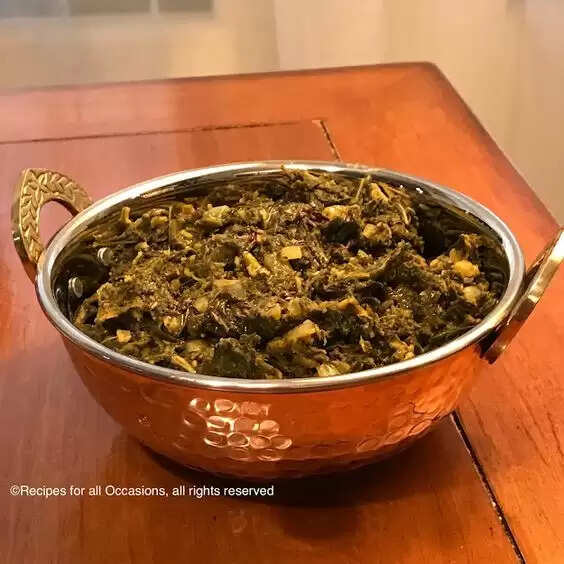Top 8 Health Benefits & Use Of Ambadi

Local greens, like Ambadi, may generate very simple revenue for our farmers since they are climate-resilient, grow in all environments, require no labour, and are labor-free.
The hibiscus family includes the green-leaved, red-stemmed ambadi. Since ambadi is taller and more acidic than the other greens, it is not harmed by microbes during rainy season. Monsoon season is safe for consumption.It is regarded as the queen of green vegetables as a result.
It is offered everywhere in the nation and goes by several names. Ambadi is its Marathi name, while Gongura in Telugu, Sorrel Leaves or Roselle in English, Pitwaa in Hindi, khata Palanga in Oriya, and mestapat in Bengali are its other names.
Green stemmed leaf and red stemmed leaf are the two variations that are available. More sour than the green stemmed kind is the red-stemmed variety.
Health Benefits of Ambadi
1. Powerhouse of nutrition
Ambadi/sorrel contains vitamins A (5320 IU, or 106 percent of your daily required intake), C (64 mg, or 106 percent), and folate (approximately 4 percent of your daily recommended consumption), according to USDA statistics. Thiamin, riboflavin, niacin, vitamin B6, and pantothenic acid are also present in trace concentrations.
2. Excellent for Women's Health
Ambadi is an excellent source of iron and folic acid. It doesn't have the constipation adverse effects that an iron supplement has. It reduces menstrual discomfort and lightens bruising since it is an excellent source of vitamin C. Use it as tea when you have regular periods.
3. Beneficial for bone health
Studies show that Ambadi leaves are an excellent strategy to maintain healthy bones. The amount of calcium, magnesium, and phosphorus in this mineral-rich plant is crucial for keeping strong, healthy bones. A diet high in these minerals can aid in avoiding osteoporosis and the loss of bone mass.
4. Improves immunological function
The body produces more white blood cells and has a stronger immune system as a result of the high level of vitamin C, also known as ascorbic acid. This is another factor in the widespread consumption of ambadi and gongura, even during the monsoon season.
5. Limits Homocysteine Concentrations
In the blood, homocysteine is a typical amino acid. Early cardiac and renal problems are connected to high homocysteine levels. Ambadi is a fantastic source of folate and vitamin B6, which are essential for maintaining low levels of homocysteine.
6. Beneficial to Diabetics
Ambadi is an excellent source of fibre, which helps to regulate blood sugar levels. It is customarily paired with bhakri, a low glycemic index combination dish comprised of makai, jowl, bajra, and ragi.
7. Helps avoid constipation
Ambadi contains magnesium and fibre, which quickly relieve constipation. This vitamin's laxative effect helps to relax the intestinal muscles, which promotes a smoother rhythm when bowel movements occur. It has an additional ability to draw water, which helps to soften and facilitate the passage of the stool.
8. Soothes your stomach
Easy to eat and prepare, ambadi soothes the stomach. Due to its high content of slowly digesting starch, it is a great food for sustaining and nourishing the gut flora. Low diversity in vegetarian sources affects the variety of the gut's microbial ecology. This has the potential to be pro-inflammatory, age faster, and cause sadness. To add a little variation to your diet, including this native Ambadi in it. Ambadi is used by tribes to boost gut health, avoid diarrhoea, and promote immunity. Its tart flavour piques the taste senses and stimulates hunger.
Uses of Ambadi
1. Flowers - Ambadi contains lovely red flowers that may be taken after being cooked in water to treat stomach aches. This herbal tea may be the ideal detox beverage.
2. Leaves - Throughout the year, people from Meghalaya to Tamil Nadu enjoy eating leaves as a delicacy. The only green leafy vegetable consumed during the monsoon is this one. It is simple to add to your regular curries, dals, and pickles. It tastes distinctly sour. It is not only a tasty food option, but it is also a healthy one because it is an excellent source of vitamins and minerals.
3. Stems - Stems are consumed and prepared in the same manner as conventional curries and dals.
4. Seeds - Ambadi seeds are crushed to create oil, which is widely used to light lights and even for cooking.


